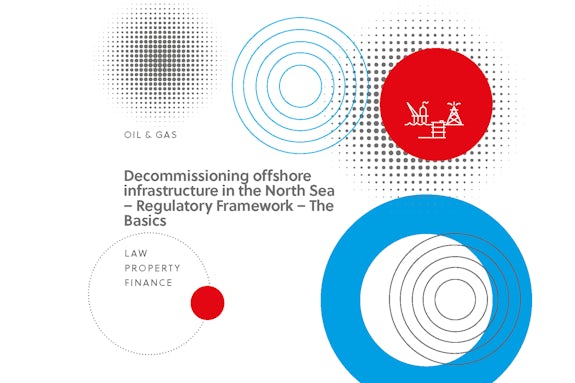There has been a lot of talk about decommissioning offshore infrastructure recently: reducing spend, protecting taxpayers’ money, health and safety, protecting the environment, etc.
What are the legal requirements and what underpins these obligations in the United Kingdom Continental Shelf (UKCS)?
What is offshore infrastructure?
Offshore infrastructure includes oil and gas platforms, pipelines, wires and cables. Don’t lose sight that this also includes wind turbines and wave and tidal generating equipment – those will need to be decommissioned too.
What is decommissioning?
The industry often used to talk about “abandonment”. This has largely been replaced with the term “decommissioning”. This includes removal, disposal or reuse. The default legal position is for operators to leave a clean seabed. Anything else is an exception to that rule.
The law here comes from a wide range of sources. All need looked at as a whole.
What are the laws applicable to the UKCS?
UN Convention on the Law of the Sea 1982 (UNCLOS)
The starting point for decommissioning in the UKCS is UNCLOS. UNCLOS requires the removal (rather than dumping) of unused offshore infrastructure with due regard to fishing, protection of marine environment and the rights and duties of other states.
There are allowances in relation to partial removal, stating that appropriate publicity is given to the depth, positon and dimensions of any remaining infrastructure. This is the subject of detailed rules.
OSPAR Convention
(Convention for the Protection of the Marine Environment of the North-East Atlantic 1992)
Most are aware of the OSPAR 98/3 decision, which confirms that the dumping at sea, and the leaving of disused offshore installations (noting that pipelines are not covered here) on the seabed is prohibited, whilst permitting derogations on a case by case basis to allow for concrete base structures and large steel jacket footings in certain circumstances to be decommissioned in situ.
It sets out certain minimum requirements:
- All offshore structures installed after 9 February 1999 must be completely removed;
- Topsides of all installations must be returned to shore for decommissioning;
- Steel installations with a jacket weight of less than 10,000t be removed for reuse, recycling or final disposal onshore;
- the footings of steel installations with a jacket weight of more than 10,000t may be considered for decommissioning in situ;
- concrete installations can be considered to be decommissioned in situ either wholly or partially; and
- exceptions may be considered for other structures where structural damage or deterioration or other reasons might prevent removal.
Protocol to the Convention on the Prevention of Marine Pollution by Dumping of Wastes and other Matter (London Protocol 1996)
This states that all dumping at sea is prohibited unless expressly permitted. It also prohibits certain incineration and/or export of waste.
Petroleum Act 1998
This is the most well-known of the relevant legislation in the UKCS. Under Part IV of the 1998 Act, a wide range of related parties can be served with a section 29 notice. Section 29 notices require those parties (jointly and severally) to submit a decommissioning programme for the relevant offshore infrastructure for approval. The scope for who can be served a s.29 notice extends to all licensees (past and present – who were licensees when the infrastructure was in place), as well as parent companies, duty holders (and others).
The Secretary of State’s powers under the 1998 Act include:
- imposing penalties for failure to comply with notices;
- stepping in to carry out the decommissioning programme and recover costs;
- insist on decommissioning security being put in place.
BEIS Guidance
Parties will also need to consider the BEIS publication: “Oil and gas: decommissioning of offshore installations and pipelines” which sets out guidance on matters such as:
- waste hierarchy;
- comparative assessment; and
- OSPAR
Energy Act 2004
The 2004 Act sets out the requirements in relation to the decommissioning of offshore renewable energy installations and related infrastructure. The Secretary of State’s powers are similar to those under the Petroleum Act in that he can (amongst other things):
- impose penalties;
- step-in and recover costs; and
- require the submission of decommissioning programmes.
It should be noted that development consent under the 2004 Act will usually prohibit any development until the written decommissioning programme has been submitted to the Secretary of State for approval.
Other relevant regulations/guidance
The above are just the highlights, but parties should also consider:
- International Maritime Organisation (IMO)’s 1989 Guidelines and Standards for Removal of Offshore Installations and Structures on the Continental Shelf and in the Exclusive Economic Zone
- Convention on Prevention of Marine Pollution by Dumping of Wastes and Other Matters 1972 (London Convention)
- Food and Environment Protection Act 1985
NEED ADVICE?
In summary, there is a lot of law in a lot of places here. If you need assistance in navigating the legal framework around decommissioning, please contact the team.








